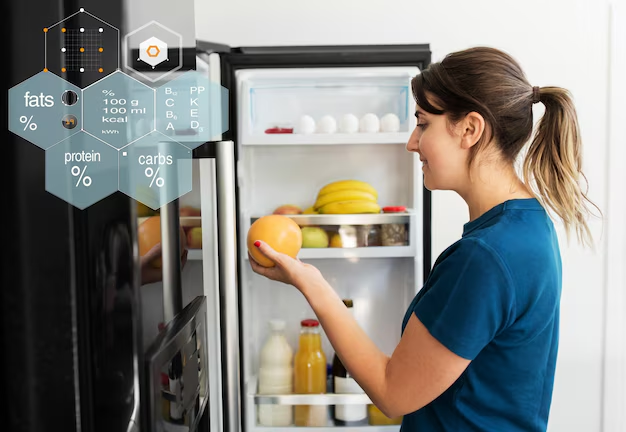Is Your Refrigerator Not Cold Enough? Here’s How to Fix It!
A refrigerator that doesn't get cold enough can be a major frustration, leading to spoiled food and wasted money. Fortunately, this common issue often has simple solutions. Whether you're dealing with a major cooling failure or just a minor blip, troubleshooting your refrigerator can empower you to resolve the problem effectively. Let's delve into effective ways to identify and fix this issue, ensuring your food stays fresh and your appliance runs efficiently.
Understanding Why Your Refrigerator Isn’t Cold
To begin with, it's crucial to understand that refrigerators rely on a delicate balance of components and settings to maintain the desired temperature. When any of these factors are out of sync, your appliance might not perform optimally. Here are some typical reasons why your refrigerator might not be cooling effectively:
Thermostat Settings: Perhaps the simplest reason is that the thermostat is set too high. Always check this first for correct settings.
Blocked Vents: Airflow is key in refrigeration. Blocked vents caused by a disorganized fridge can lead to uneven cooling.
Dirty Coils: Dust and grime can accumulate on coils, impeding their ability to release heat, which affects cooling operations.
Faulty Door Seals: Leaky door seals can cause cool air to escape, forcing the refrigerator to work harder to maintain temperature.
Overcrowded Storage: Overpacking your refrigerator can obstruct air circulation, resulting in poor cooling performance.
Step-by-Step Troubleshooting Guide
Let's walk through the steps to diagnose and fix the issue with your refrigerator not getting cold enough:
Check and Adjust Thermostat Settings
Locate the Thermostat: Most thermostats are inside the fridge; consult your user manual if you're unsure.
Set the Temperature: The refrigerator compartment should ideally be set between 35°F and 38°F (1.6°C - 3.3°C), while your freezer should sit at 0°F (-17.8°C).
Wait and Observe: After adjusting, give your refrigerator time to stabilize and check if the cooling improves.
Ensure Proper Airflow
Rearrange Items: Ensure that items aren’t blocking the air vents, typically located in the back of the fridge.
Space Between Items: Keep enough space between stored items to allow for proper air circulation.
Clean the Condenser Coils
Locate the Coils: These are often behind or beneath the refrigerator.
Unplug and Clean: Unplug the fridge, then use a vacuum and a coil cleaning brush to remove dust and debris.
Do This Regularly: Clean the coils every six months to prevent dust buildup that impairs performance.
Inspect Door Seals
Check for Gaps or Tears: Close the door on a piece of paper. If you can easily pull it out, the seal might be worn out.
Clean the Seal: Use warm, soapy water to clean the seals and remove any debris.
Replace if Necessary: If gaps persist, look into replacing the seals.
Avoid Overcrowding
Strategic Arranging: Arrange food items efficiently to ensure nothing blocks the back wall.
Conduct a Clear-out: Dispose of expired or unnecessary items to create more space.
Tech Issues: When to Call a Professional
If the above steps haven’t resolved the issue, you may be facing a more technical problem:
Compressor Issues: If unusual noises are emanating from the compressor, this might require professional help.
Refrigerant Leaks: Only certified technicians should handle refrigerant refills or leaks due to environmental regulations.
Malfunctioning Fans: If the evaporator or condenser fan isn’t functioning, it may need replacing.
Preventive Maintenance Tips
Adopting preventive maintenance can keep your refrigerator running smoothly and prevent future cooling issues:
- Regular Cleaning: Keep the interior and exterior clean.
- Monitor Temperature Settings: Check settings monthly to ensure they remain at recommended levels.
- Inspect and Maintain Seals: Keep seals dry, clean, and free from mildew.
- Professional Inspections: Consider annual professional maintenance to spot early signs of trouble.
Quick Reference Summary
Here’s a concise list of steps and checks to help improve your refrigerator’s cooling performance:
Troubleshooting Checklist 📋
- 🌡️ Thermostat Settings: Ensure settings are correct.
- 🔄 Airflow: Ensure shelves are not obstructing vents.
- 🧹 Clean Coils: Regular cleaning to optimize efficiency.
- 🚪 Door Seals: Check and clean or replace if necessary.
- 📦 Overcrowding: Avoid cramped conditions inside the fridge.
Key Takeaways to Keep Your Cool 😎
- Regular Maintenance: Regularly clean and inspect key components to prevent buildup and ensure efficiency.
- Mindful Organization: Arranging items strategically can significantly improve airflow and cooling efficiency.
- Know When to Call: Some issues like compressor failures are best left to professionals.
By understanding and addressing these common causes effectively, you can ensure your refrigerator runs efficiently, saving you both time and energy. Remember, maintaining optimal fridge health is as easy as regular cleaning and inspection. Keep your cool, and let your fridge do the same!
